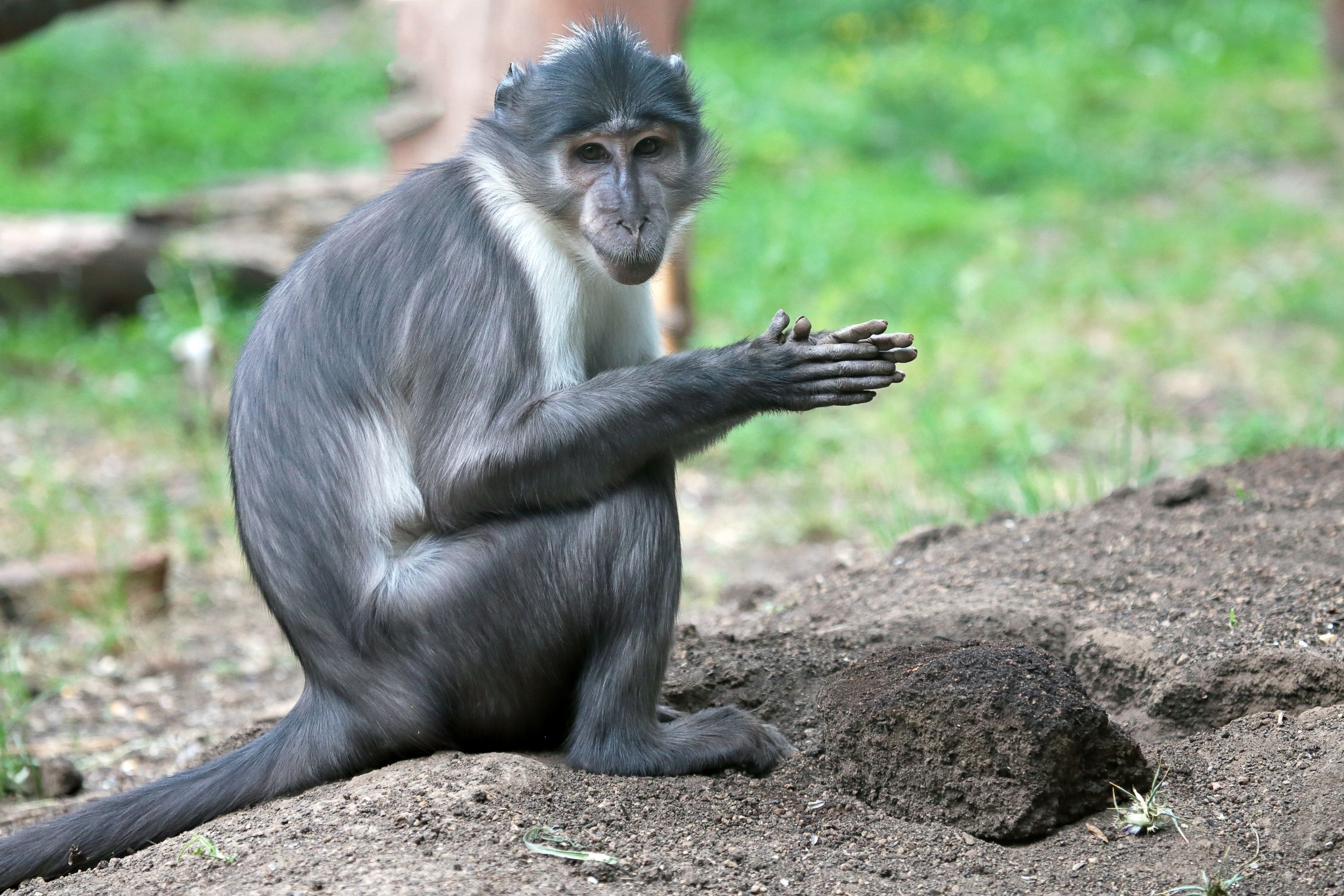Sanje mangabey
(Cercocebus sanjei)

Description
The Sanje mangabey (Cercocebus sanjei) is a highly endangered Old World monkey of the white-eyelid mangabey group from the Eastern Arc Mountains in Tanzania.They are about 50–65 centimetres (20–26 in) in length, excluding the tail, and their body colour is greyish. Fruit makes up about 70% of their diet.They live in valley forests and on mountain slopes, but are mostly ground-dwelling, which makes them susceptible to hunting and poaching. Their habitat is being degraded, and the International Union for Conservation of Nature has assessed their conservation status as being "endangered". The Sanje mangabey is a medium-sized monkey; the sexes are similar in appearance but males are slightly larger than females.They are about 50–65 centimetres (20–26 in) long, excluding tail, and weigh about 7–9 kilograms (15–20 lb). The snout is grey while the skin on the rest of the face is pinkish or greyish, with a pale bluish border at the hairline, The eyelids and area under the eyes are particularly pale. The hair on the crown is longer than elsewhere and tends to have a parting or small whorl. Hairs on the crown and widow's peak have blackish bases and greyish-brown shafts. Hairs on the back, flanks and limbs have creamy grey bases and darker grey shafts, tipped with bands of yellowish-orange and black. The hairs on the underparts are long and pale yellowish-orange. The ends of the limbs and the hands and feet are dark grey. The bare area of skin under the tail is bluish-grey tinged with pink, and the ischial callosities are pink. The long, grey tail has a tuft of longer hairs at the tip This mangabey is endemic to East Africa, and only occurs in two forests in the Udzungwa Mountains of south-central Tanzania. Although it is known from areas with altitudes of from 300 to 1,800 m (1,000 to 5,900 ft), it is most common in mid-altitude evergreen forests, and mosaic woodland with mixed semi-deciduous and evergreen trees. It sometimes occurs in low altitude miombo woodland with Brachystegia species, and has been known to invade cropland. It frequents forested valley bottoms near watercourses, and also dry, more open slopes with scattered trees, bracken and Rubus species
Taxonomic tree:







